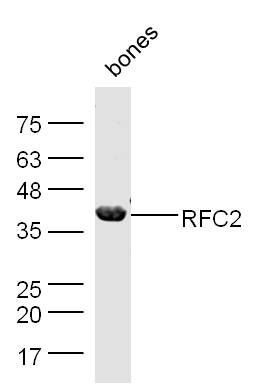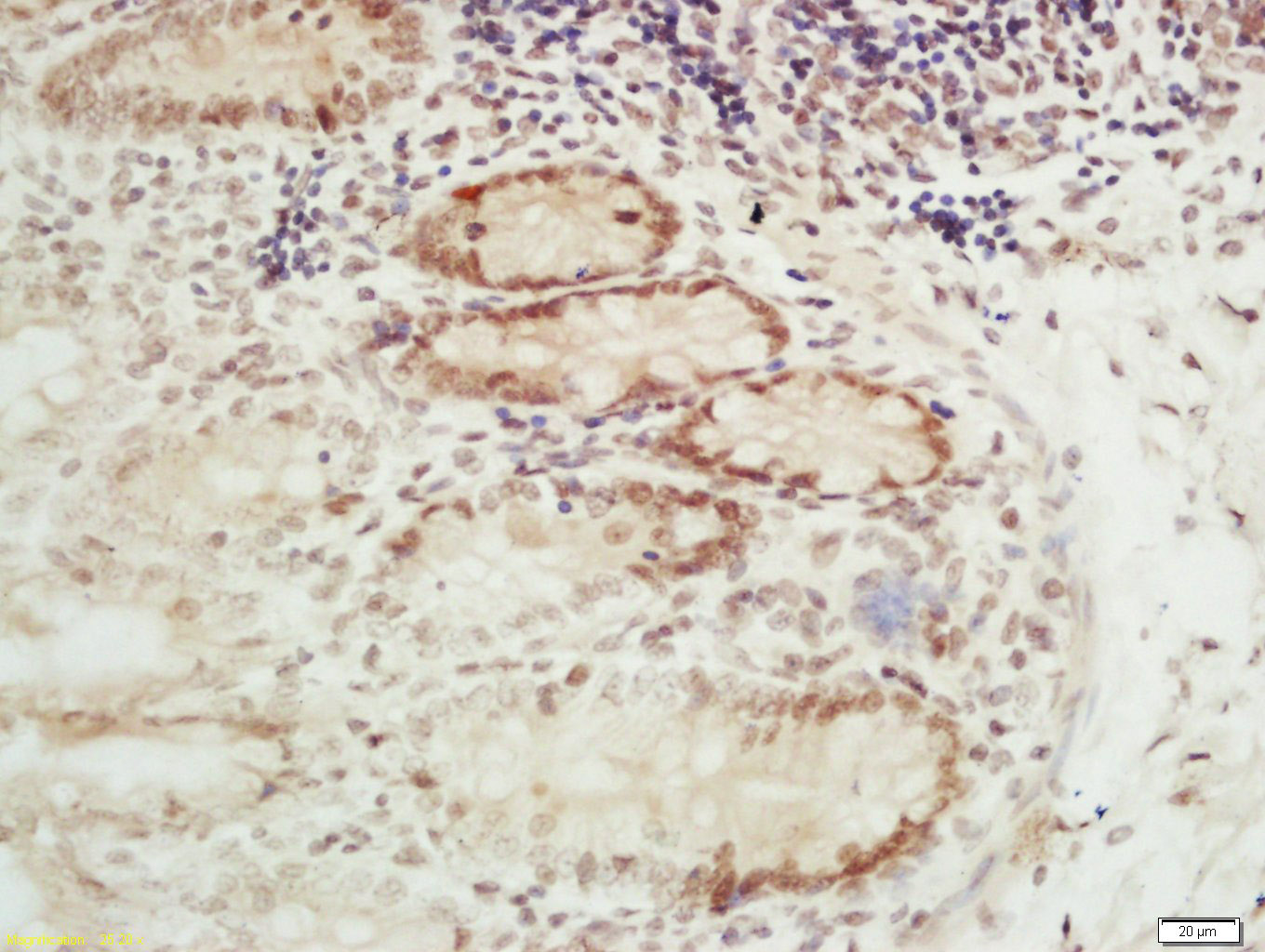
Rabbit Anti-RFC2 antibody
Activator 1; Activator 1 subunit 2; Activator 140 kDa Subunit; MGC3665; OTTHUMP00000160645; OTTHUMP00000160646; replication factor C (activator 1) 2 40kDa; Replication factor C (activator 1) 2; Replication factor C 2; Replication Factor C 40 kDa subunit;
View History [Clear]
Details
Product Name RFC2 Chinese Name 复制激活因子C2抗体 Alias Activator 1; Activator 1 subunit 2; Activator 140 kDa Subunit; MGC3665; OTTHUMP00000160645; OTTHUMP00000160646; replication factor C (activator 1) 2 40kDa; Replication factor C (activator 1) 2; Replication factor C 2; Replication Factor C 40 kDa subunit; Replication factor C subunit 2; replication factor c2; Replication Factor C40 kDa subunit; RF C 40 kDa subunit; RF-C 40 kDa subunit; RFC 2; RFC 40; RFC 40 kDa subunit; RFC2; RFC2_HUMAN; RFC40; A1 40 kDa subunit; A1 antibody A140; Activator 1 40 kDa Subunit. Research Area Cell biology Apoptosis Epigenetics Immunogen Species Rabbit Clonality Polyclonal React Species Mouse, (predicted: Human, Rat, Dog, Pig, Cow, Horse, Sheep, ) Applications WB=1:500-2000 ELISA=1:5000-10000 IHC-P=1:100-500 IHC-F=1:100-500 ICC=1:100-500 IF=1:100-500 (Paraffin sections need antigen repair)
not yet tested in other applications.
optimal dilutions/concentrations should be determined by the end user.Theoretical molecular weight 39kDa Cellular localization The nucleus Form Liquid Concentration 1mg/ml immunogen KLH conjugated synthetic peptide derived from human RFC2: 281-354/354 Lsotype IgG Purification affinity purified by Protein A Buffer Solution 0.01M TBS(pH7.4) with 1% BSA, 0.03% Proclin300 and 50% Glycerol. Storage Shipped at 4℃. Store at -20 °C for one year. Avoid repeated freeze/thaw cycles. Attention This product as supplied is intended for research use only, not for use in human, therapeutic or diagnostic applications. PubMed PubMed Product Detail Replication factor C (RFC) is an essential DNA polymerase accessory protein that is required for numerous aspects of DNA metabolism including DNA replication, DNA repair, and telomere metabolism. RFC is a heteropentameric complex that recognizes a primer on a template DNA, binds to a primer terminus, and loads proliferating cell nuclear antigen (PCNA) onto DNA at primer-template junctions in an ATP-dependent reaction. All five of the RFC subunits share a set of related sequences (RFC boxes) that include nucleotide-binding consensus sequences. Four of the five RFC genes (RFC1, RFC2, RFC3, and RFC4) have consensus ATP-binding motifs. The small RFC proteins, RFC2, RFC3, RFC4 and RFC5, interact with Rad24, whereas the RFC1 subunit does not. RFC2, the third-largest subunit of the RFC complex, exhibits ATP binding which makes it important for both DNA replication and checkpoint function. The human RFC2 gene maps to chromosome 7q11.23 and encodes the RFC2 subunit. RFC2 has been associated with Williams-Beuren syndrome, which is a rare multi-system developmental disorder caused by the deletion of contiguous genes at 7q11.23.
Function:
The elongation of primed DNA templates by DNA polymerase delta and epsilon requires the action of the accessory proteins proliferating cell nuclear antigen (PCNA) and activator 1. This subunit binds ATP.
Subunit:
Heterotetramer of subunits RFC2, RFC3, RFC4 and RFC5 that can form a complex either with RFC1 or with RAD17. The former interacts with PCNA in the presence of ATP, while the latter has ATPase activity but is not stimulated by PCNA. RFC2 also interacts with PRKAR1A; the complex may be involved in cell survival.
Subcellular Location:
Nucleus.
DISEASE:
Note=RFC2 is located in the Williams-Beuren syndrome (WBS) critical region. WBS results from a hemizygous deletion of several genes on chromosome 7q11.23, thought to arise as a consequence of unequal crossing over between highly homologous low-copy repeat sequences flanking the deleted region.
Similarity:
Belongs to the activator 1 small subunits family.
SWISS:
P35250
Gene ID:
5982
Database links:Entrez Gene: 5982 Human
Entrez Gene: 19718 Mouse
Omim: 600404 Human
SwissProt: P35250 Human
SwissProt: Q9WUK4 Mouse
Product Picture
Primary: Anti-RFC2 (SL11305R) at 1/300 dilution
Secondary: IRDye800CW Goat Anti-Rabbit IgG at 1/20000 dilution
Predicted band size: 39 kD
Observed band size: 39 kD
Tissue/cell: mouse intestine tissue; 4% Paraformaldehyde-fixed and paraffin-embedded;
Antigen retrieval: citrate buffer ( 0.01M, pH 6.0 ), Boiling bathing for 15min; Block endogenous peroxidase by 3% Hydrogen peroxide for 30min; Blocking buffer (normal goat serum,C-0005) at 37℃ for 20 min;
Incubation: Anti-RFC2 Polyclonal Antibody, Unconjugated(SL11305R) 1:200, overnight at 4°C, followed by conjugation to the secondary antibody(SP-0023) and DAB(C-0010) staining
Bought notes(bought amounts latest0)
No one bought this product
User Comment(Total0User Comment Num)
- No comment




 +86 571 56623320
+86 571 56623320
 +86 18668110335
+86 18668110335

